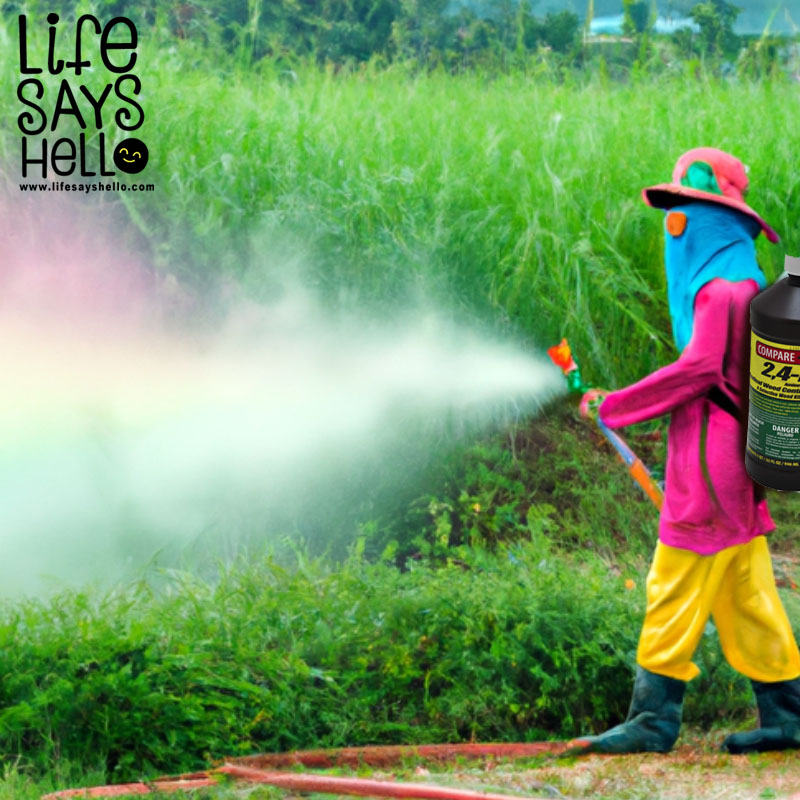Does 24d Kill Grass? A Comprehensive Guide to Understanding and Safely Using This Herbicide on Your Lawn

If you've ever battled pesky broadleaf weeds and woody plants in your lawn, you might have come across the herbicide 24d, but does 24d kill grass? In this comprehensive guide, we'll explore the effects of 24d on various grass types and how to safely and effectively use it in your lawn care routine.
Introduction
As a homeowner or gardener, maintaining a healthy and weed-free lawn can be a challenging task. One of the products often used to combat invasive weeds is the herbicide 24d. But, a common concern arises: does 24d kill grass? In this article, we'll dive deep into the world of 24d and its effects on grass, providing you with all the information you need to make an informed decision about using this herbicide in your lawn care routine.
How 24d Works
To understand the potential effects of 24d on grass, it's essential to know how this herbicide works. 24d is a selective herbicide, meaning it targets specific plants while leaving others unharmed. It achieves this selectivity by mimicking a plant hormone called auxin, which plays a crucial role in regulating growth and development in plants.
When 24d is absorbed by sensitive plants, it causes an overproduction of auxin, leading to abnormal growth patterns. This rapid and uncontrolled growth eventually causes the plant to die, making 24d an effective tool for controlling broadleaf weeds and woody plants.
Grasses, on the other hand, are generally tolerant of 24d due to their unique auxin transport system. Unlike broadleaf plants, grasses have a less sensitive auxin transport system, allowing them to withstand the effects of 24d without suffering the same detrimental growth patterns.
Grass Sensitivity to 24d
While most grasses can tolerate 24d, some species are more sensitive to the herbicide and may show signs of injury or stress after exposure. Two examples of grasses that are more susceptible to 24d are centipede grass (Eremochloa ophiuroides) and St. Augustine grass (Stenotaphrum secundatum).
Centipede grass is a warm-season grass that thrives in the southeastern United States. It is known for its low maintenance requirements and tolerance to acidic soils. However, it has a lower tolerance to 24d than other grasses, and exposure to the herbicide can cause leaf yellowing, stunted growth, and even plant death in severe cases.
Similarly, St. Augustine grass is a popular warm-season grass found in the southern United States, known for its thick, carpet-like appearance and ability to grow in a variety of soil types. Like centipede grass, St. Augustine grass is more sensitive to 24d and may exhibit signs of injury or stress, such as leaf curling, yellowing, and stunted growth, following exposure to the herbicide.
Tips for Using 24d Safely on Your Lawn
To minimize the risk of harming grass or other non-target plants when using 24d, it's crucial to follow the herbicide's label instructions carefully and adhere to the recommended dosage and application methods. Here are some tips to help you use 24d safely and effectively on your lawn:
a. Read the label: Before using 24d, thoroughly read the product label to ensure you understand the proper application rates, mixing instructions, and any precautions or restrictions associated with the herbicide.
b. Measure your lawn: Accurately measure your lawn's square footage to determine the correct amount of 24d needed for your specific area. Over-application of the herbicide can increase the risk of damage to grass and other non-target plants.
c. Use the right equipment: Use a high-quality, calibrated sprayer to apply 24d to your lawn. Properly calibrated equipment ensures even and accurate distribution of the herbicide, reducing the risk of over-application or uneven coverage.
d. Choose the right time: Avoid spraying 24d on windy days or when the temperature is above 85°F (29°C), as these conditions can increase the risk of drift or volatilization, potentially harming nearby plants or grasses.
e. Spot treat: If you only have a few weeds to deal with, consider spot treating them with 24d rather than applying the herbicide to your entire lawn. This approach can help minimize the risk of damage to your grass and other non-target plants.
Responsible Use and Disposal of 24d
Like any herbicide, 24d can have negative effects on the environment if not used and disposed of responsibly. Contamination of water sources, soil, and food crops can harm non-target plants and animals, making it essential to use 24d with care and dispose of any leftover product properly.
To minimize the environmental impact of 24d, follow these best practices:
a. Store 24d securely: Keep 24d in its original container, tightly sealed, and stored in a cool, dry place away from children, pets, and food sources.
b. Dispose of leftover 24d properly: If you have unused 24d that you no longer need, do not pour it down the drain or into water sources. Instead, contact your local waste disposal facility or hazardous waste collection program for guidance on proper disposal.
c. Practice integrated pest management (IPM): Rather than relying solely on herbicides like 24d, consider incorporating a variety of weed control methods into your lawn care routine, such as hand-pulling weeds, using pre-emergent herbicides, or employing biological controls.
Conclusion
So, does 24d kill grass? The answer is generally no, as most grasses are tolerant of the herbicide due to their unique auxin transport system. However, some grasses, such as centipede grass and St. Augustine grass, are more sensitive to 24d and may show signs of injury or stress after exposure. By following the tips and best practices outlined in this guide, you can safely and effectively use 24d to control weeds in your lawn while minimizing the risk of harm to your grass or the environment.




Comments